Fall color tour... Fluorescent orange, yellow, reds, A beautiful gift!
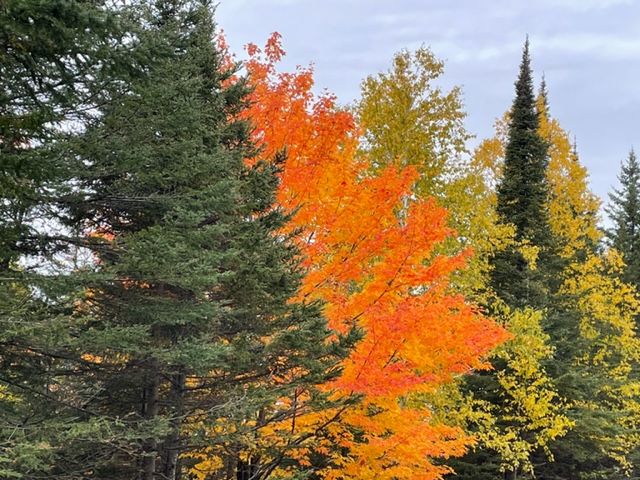
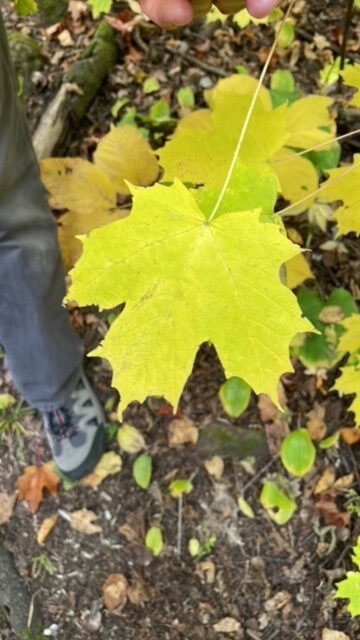
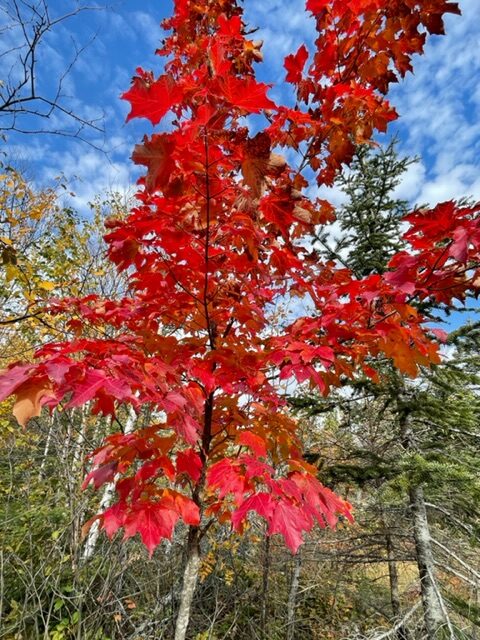
I did not enhance these photos, before or after taking theses pictures.
The leaves were that brilliant.
Fall color tour... Fluorescent orange, yellow, reds, A beautiful gift!



I did not enhance these photos, before or after taking theses pictures.
The leaves were that brilliant.
Our trip to the north shore proved to be a lot more colorful than we were expecting.
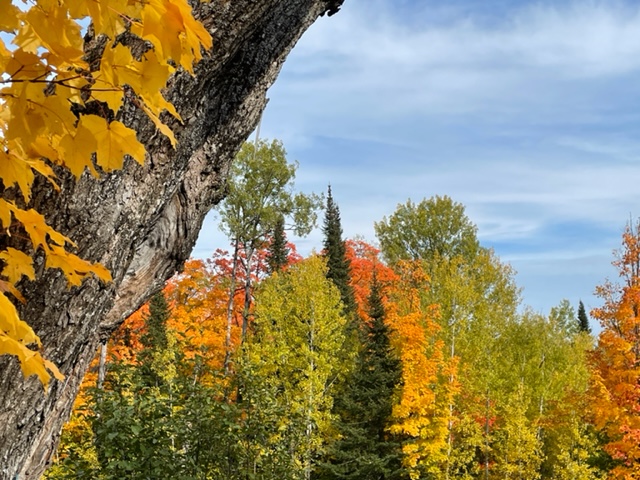
We had already started seeing pockets of beautiful fall colors on our drive up, so I started to get a little excited…and then the colors began to pop out everywhere…with wonderful contrasts to the evergreen trees.
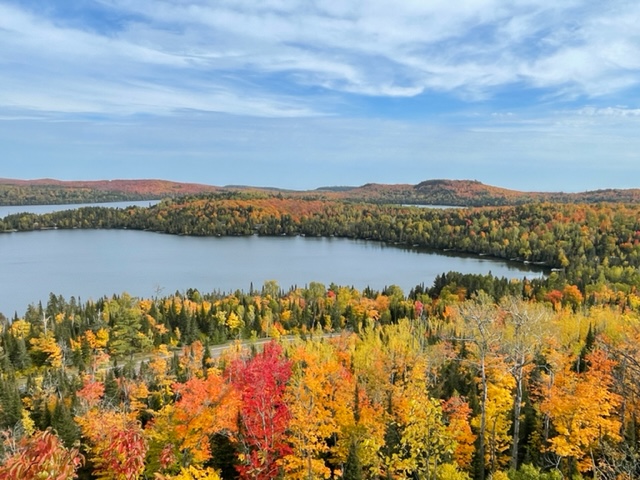


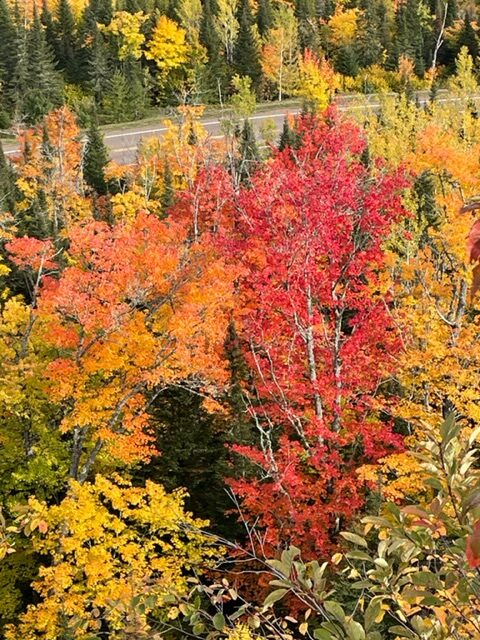
The weather also turned out better than I had hoped for, with warmer temperatures and some nice sunshine and blue skies (and one cloudy day). We had packed clothes for colder weather.

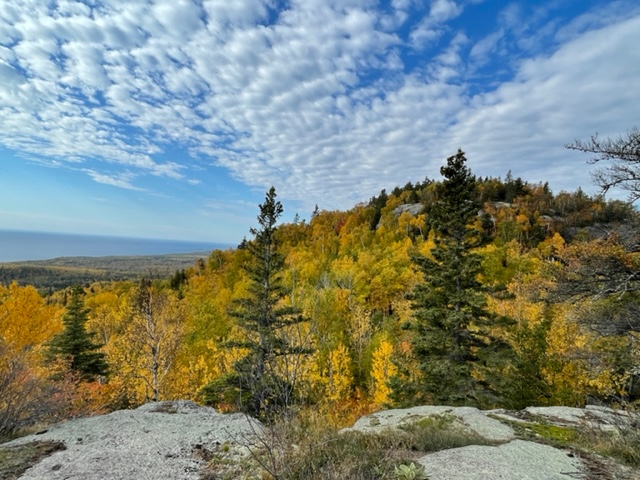
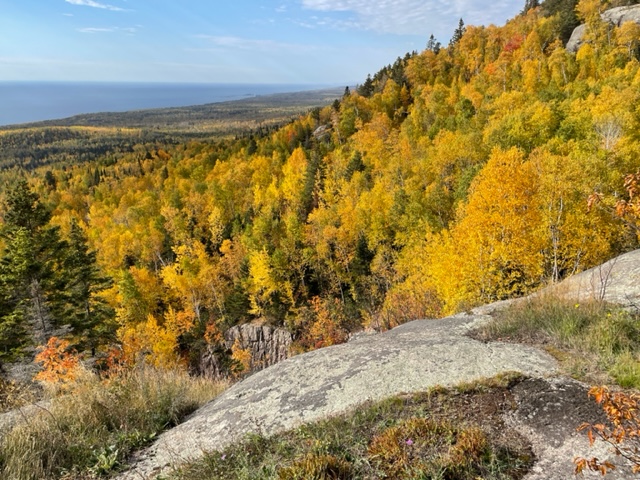


We followed our annual routine of balancing cabin time and lake time with hiking and local drives.
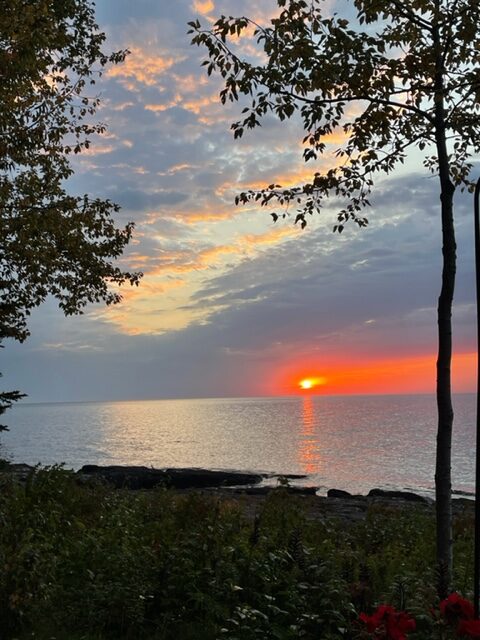
We watched the sun rise over the big lake and had a camp fire on the rocks. We stopped in Hinckley and Duluth on the way up, and stopped in Grand Marais one day. It’s all so familiar, yet all so refreshing, relaxing, and restorative… and so much fun!


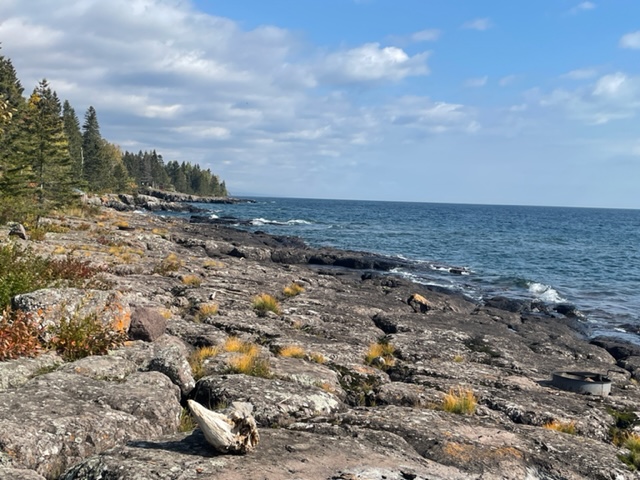

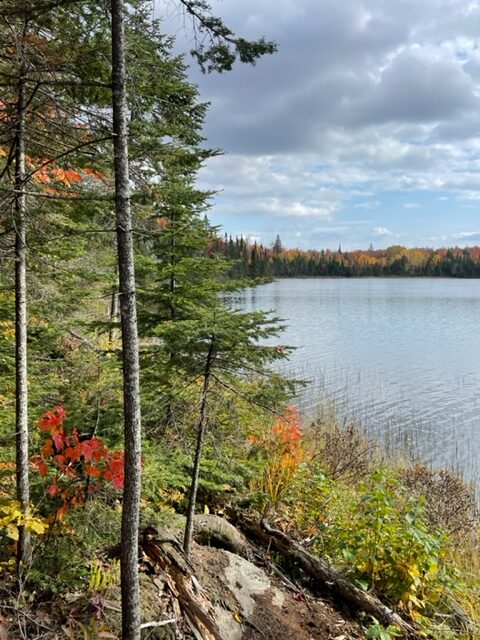
The colors were breathtaking…everywhere we went. It was spectacular to see and hard to photograph with my iPhone.
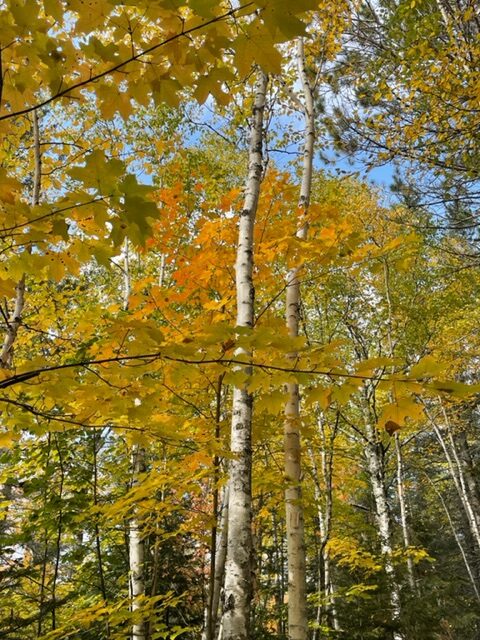
But it was enough to witness the colors and breath in the fresh air, smell the different whiffs of pine scents, lake water, decomposing leaves, feel the crisp air and to “taste and see that the Lord is good” (Psalm 34:8a).
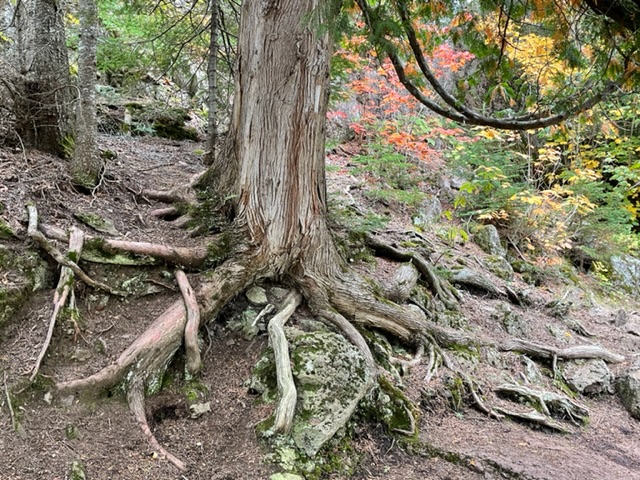
I stand in awe of the Creator of these incredible autumn colors.

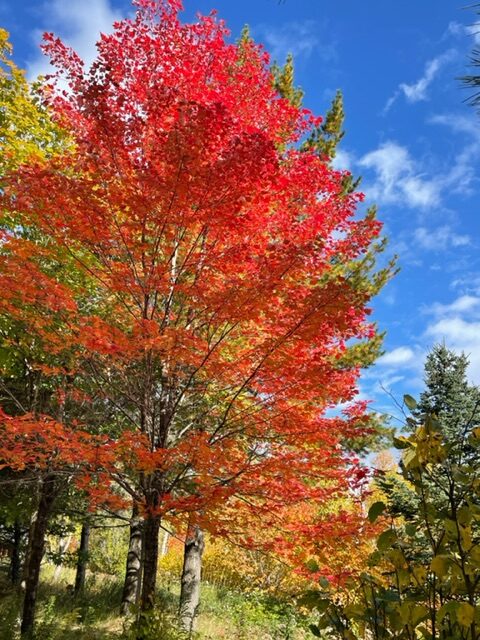
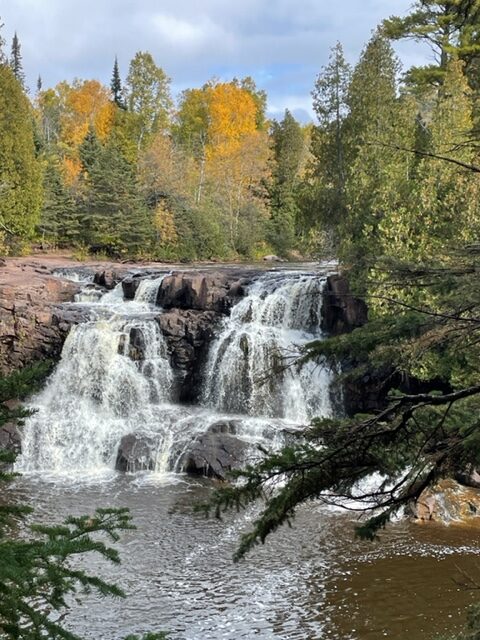
And the colors were not only up north…we saw them driving home, and right here in Northfield, and outside our front and back doors!
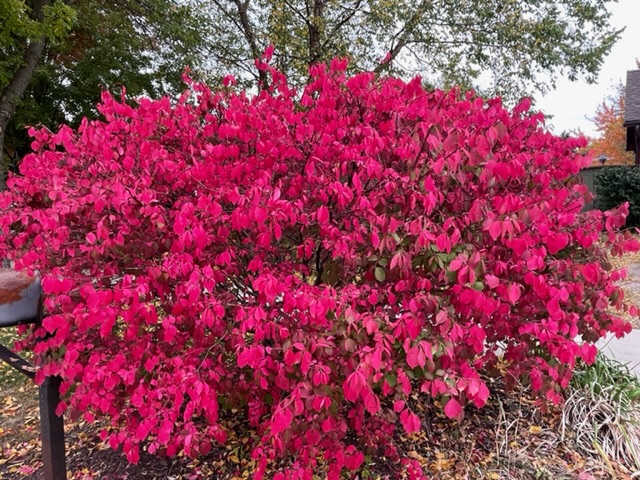
This wraps up my series on our trip to Norway. However, other stories may pop up in the future.
In Norway, being close to the sea every day, surrounded by amazing beauty, was an incredible gift.

I felt so at home. I felt I belonged.
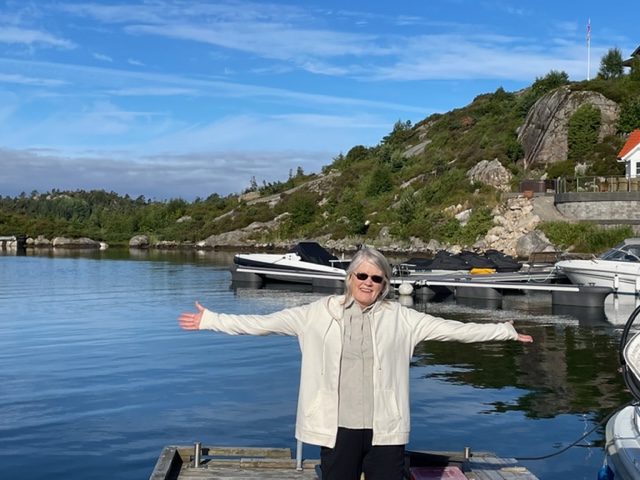
In Minnesota, my happy place is on the shores of Lake Superior. I felt the same feelings in Norway, as I do when I’m up on the north shore.
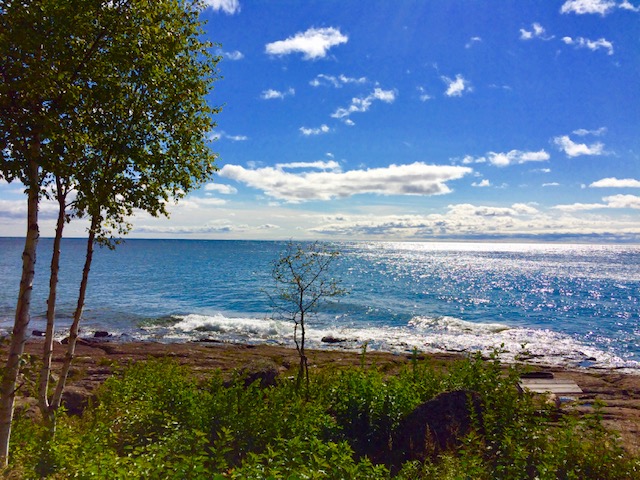
I’ve been told my Grandmother Elizabeth loved being up on the north shore too. It reminded her of the homeland she left behind in Norway, when she was a young woman. I like to think about our connection. She died when I was ten years old.
I love my rich Norwegian heritage, and am proud of it!
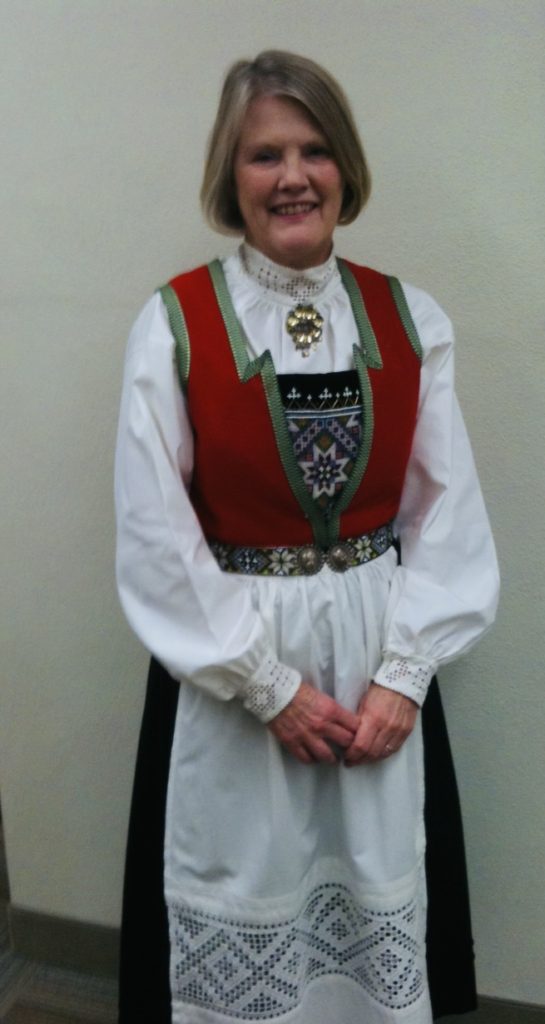
I was grateful that Gary made so many travel arrangements to make this trip happen. And that he embraced my relatives, and they embraced him.

And, of course, I’m grateful to all my many relatives in Norway for the marvelous and abundant hospitality shown to us.
My heart is full, yet part of it was left behind Norway.
We boarded a few boats during our time in Norway. First, we were cruising along the western coast of Norway on the ferry/postal ship, the Hurtigruten.
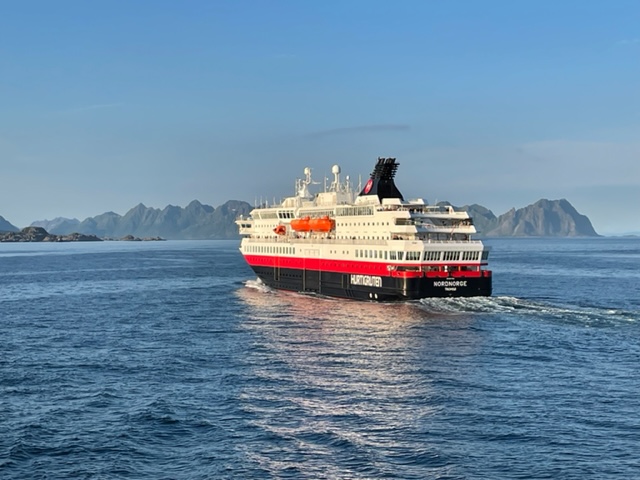
We also took a number of ferries as part of our road trips. It’s just a natural and reliable way of life, and transportation, in the area where we were.

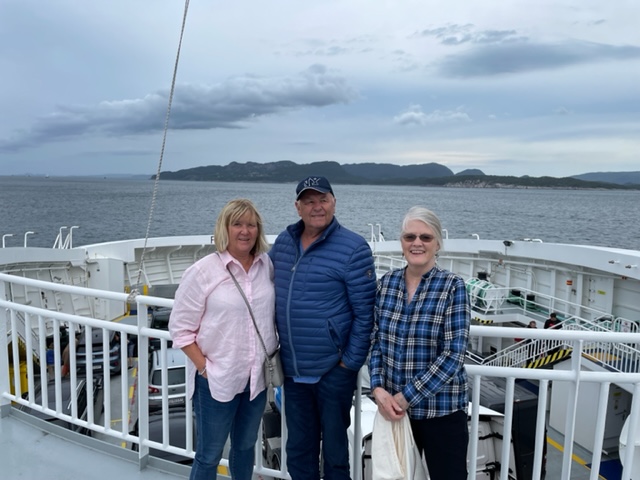
And, we took two more intimate rides in a boat that Heine and Kari have at their cottage. It seats six comfortably, and they graciously took us for rides on the Norwegian sea.
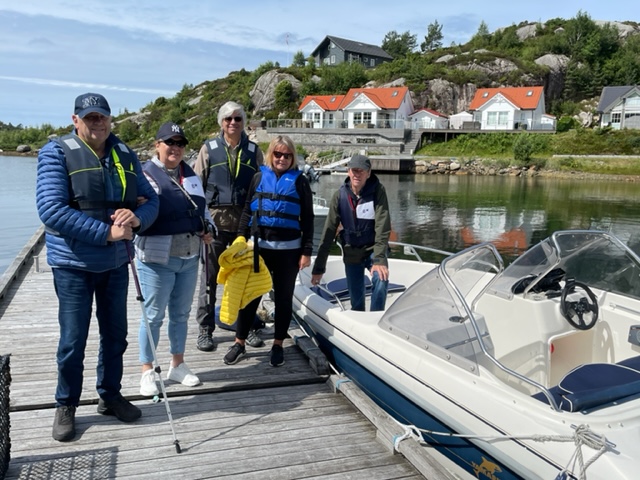
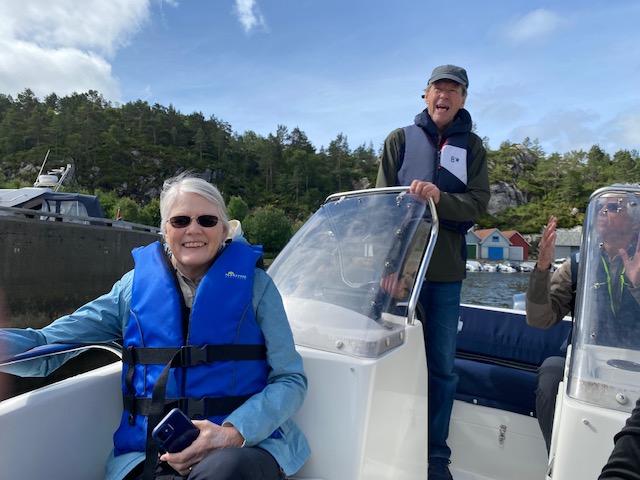
I love the water. I love being on it, or beside it. This was a special treat.
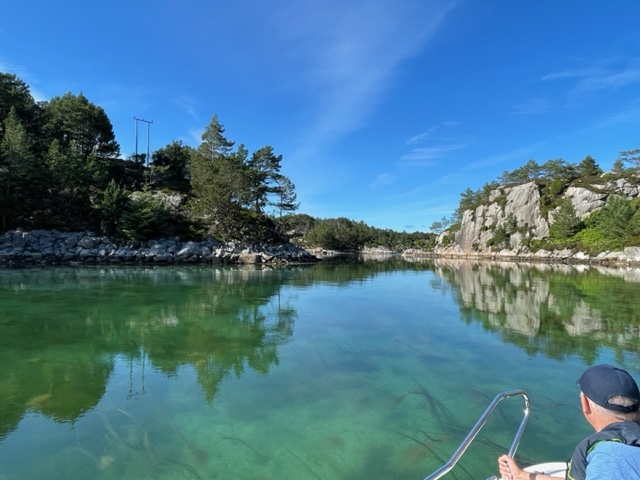
The scenery was stunning.

The scenery was breathtaking.

The scenery was colorful.
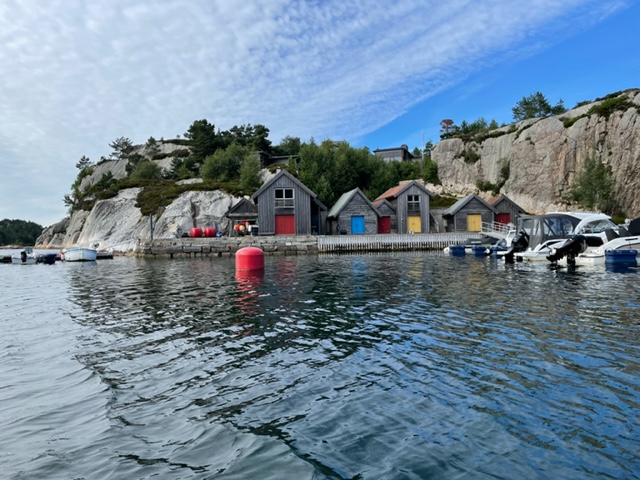
The scenery was pastoral.
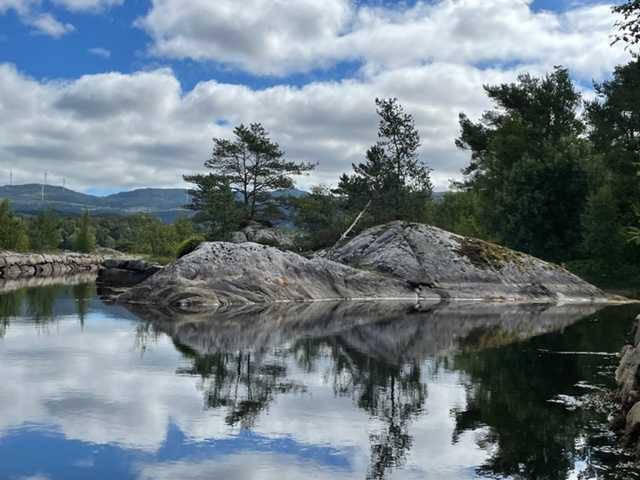
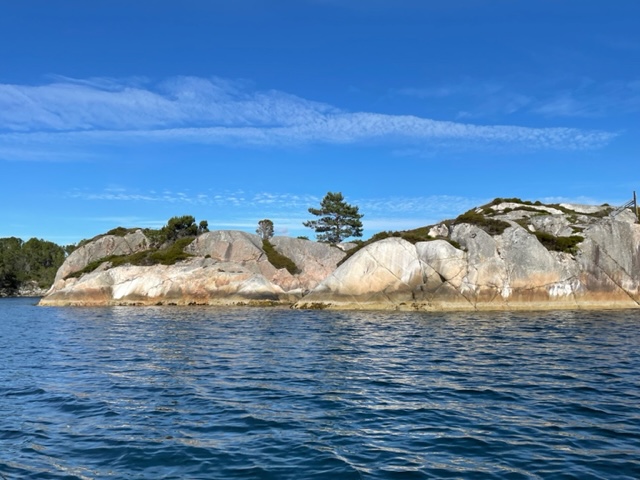
On one trip we docked in a town called Fitjar, where Kari grew up.
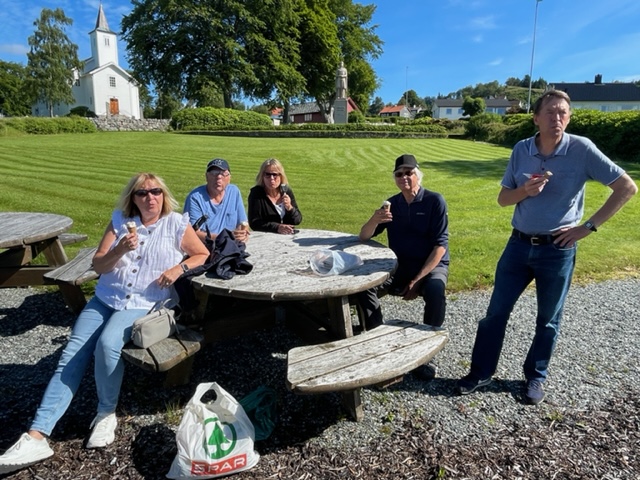
We disembarked and found ice cream treats, before getting back on the boat to continue our fabulous ride.
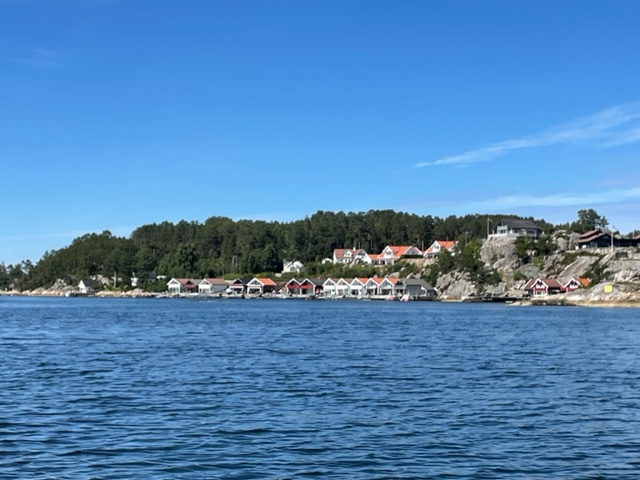
The scenery included many styles of boathouses along the sea shore…
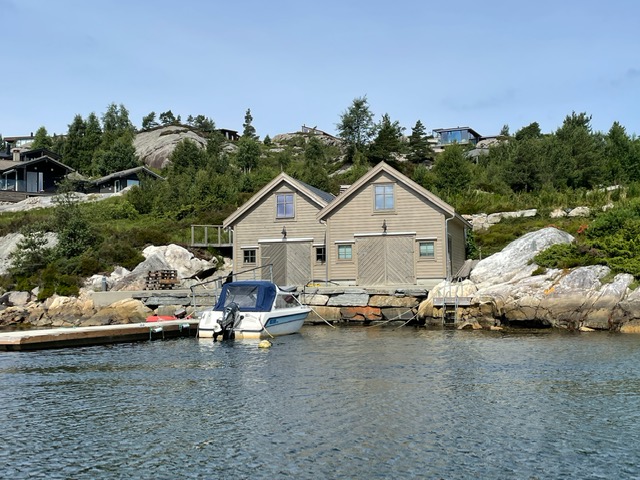

and hilly and rocky shorelines.

What a pleasure it was to be on the water, taking in a different perspective of this absolutely, beautiful country.
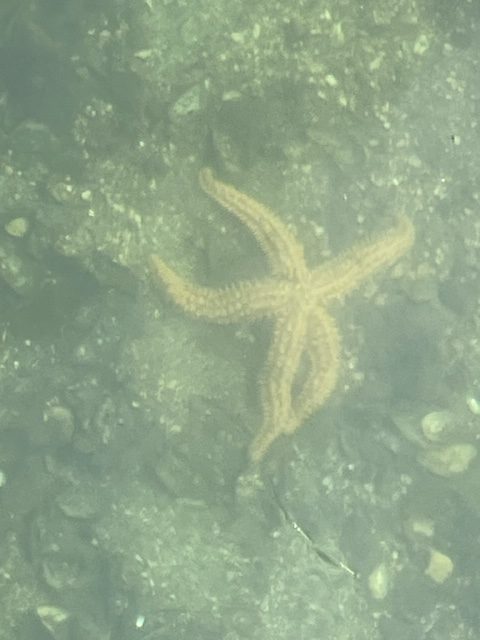
Our drive to the cottage took us through beautiful countryside across the island of Stord. And once at the cottage, we were able to go on two hikes in the countryside, during our stay.

On one hike we walked up to one of many wind turbines in a hilly area along the coast, close to the sea.
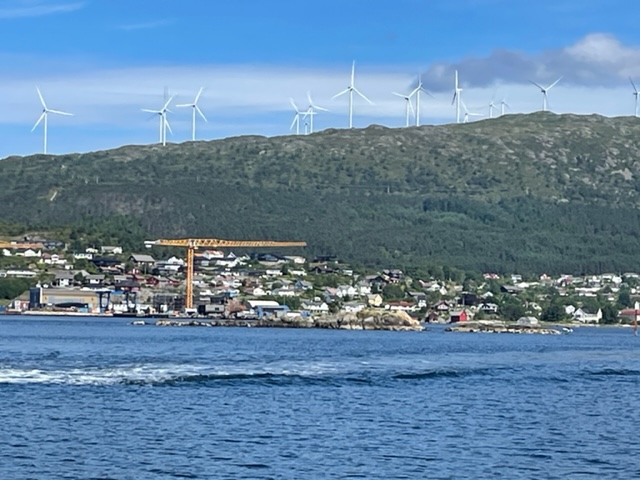
At the top, the view overlooked 365 islands off the coast of western Norway. Even though it was partly cloudy, we could see for miles, and we could see the North Sea beyond the islands.
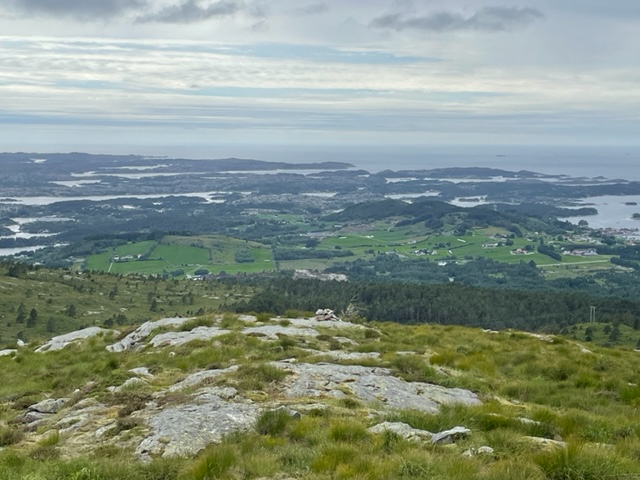

Three sheep met us on the way up. They walked toward us, stopped, and then turned around as though they wanted us to follow them. When the sheep turned off the main trail, they turned and looked at us quizzically, while we kept going straight.

We continued to hike to the top, looked around, then headed back. The sheep met us, once again, on the way down. They seemed to be wondering why we didn’t follow them the first time, and they were willing to give us a second chance!
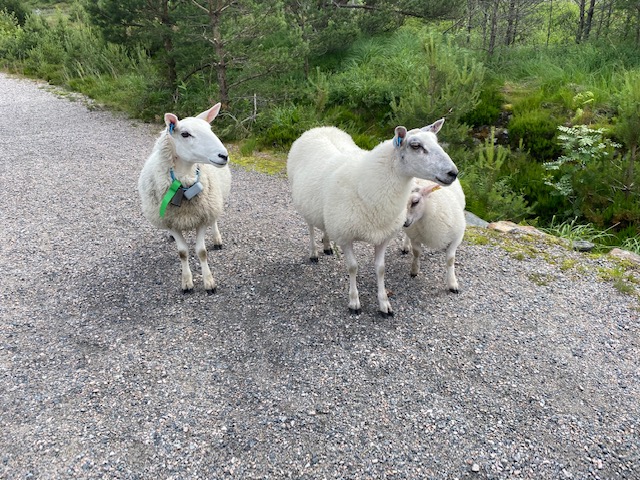
A different hike took us through a forest to a trail that was dotted with interesting characters and trolls along the path.

Apparently, the displays began with one man creating dioramas and placing them in the forest, along the side of the trail.
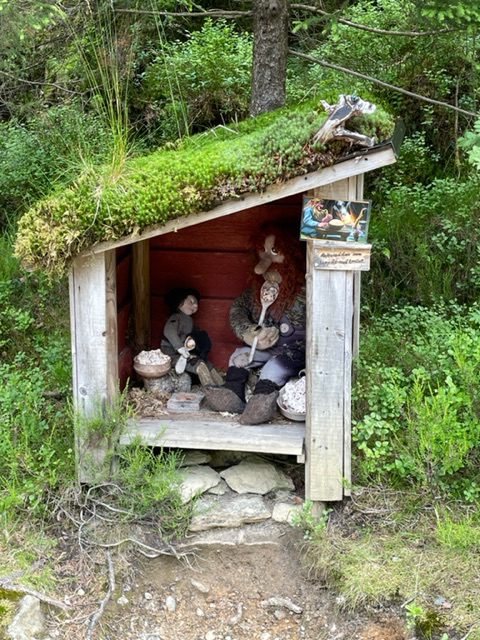
It turned into several more figures being created, and added, to the trail.

Now it is a fun place for children, or for those of us young-at-heart, to look for these special creatures.
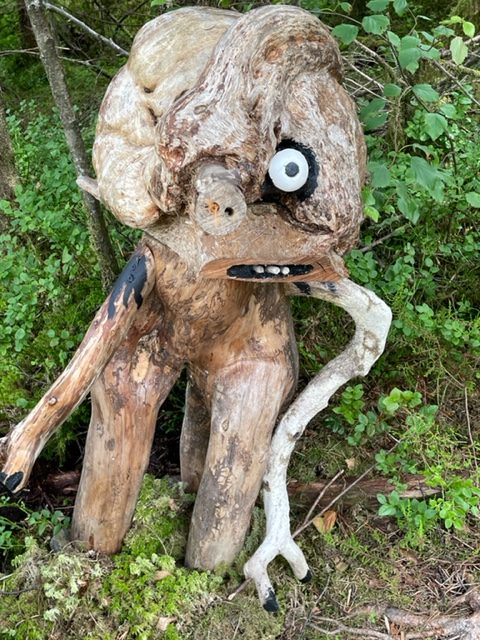
Adventure Road is close to a city so children can visit the forest easily, and walk on the trail to find the treasures.
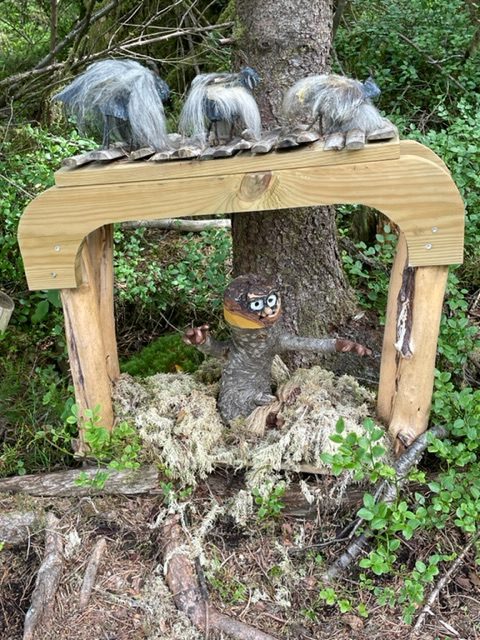
Our hike took us to this unique Troll Forest. It was a fun adventure.

After saying good-bye to Brita’s house in Kaldestad, we took the ferry to the island of Stord, where my second cousin Heine and his wife Kari live, and work, and have a “cabin”. Heine works for a company that makes oil platforms for the north sea.
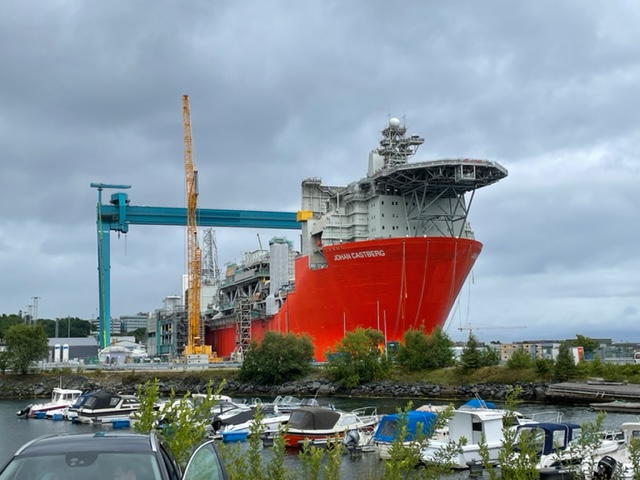
Kari manages a delightful home decor/gift shop, The Five Hens.
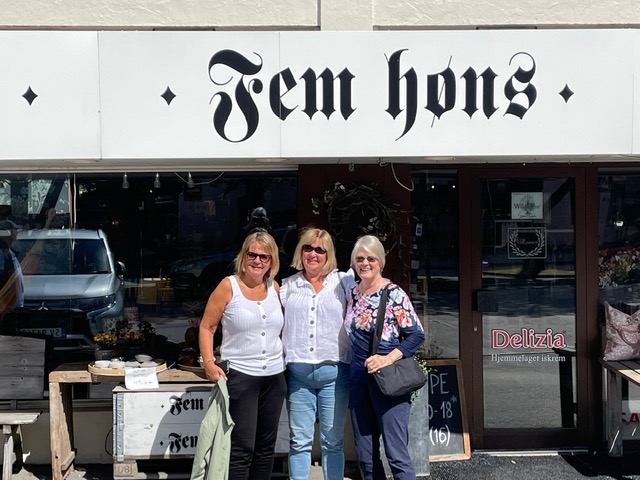
We stopped by their home in the southeast area of Stord, on the way to their cottage on the sea, located in the northwest part of the island. That day we went from my grandfather’s house, built 1882, to Heine & Kari’s house on the sea, built 2012.
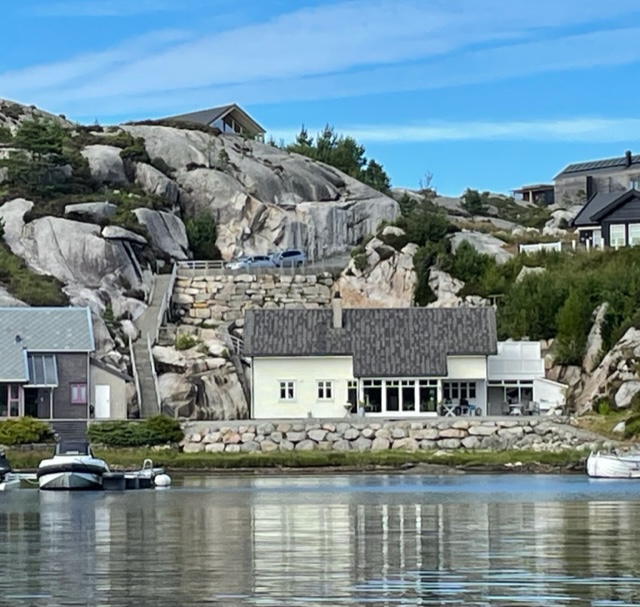
The cottage was a gorgeous home, with floor to ceiling windows and it sat right on the water’s edge, offering a great view. The six of us, Jomar and Bente, Gary and me, Heine and Kari, spent three nights there and had an enchanting time.
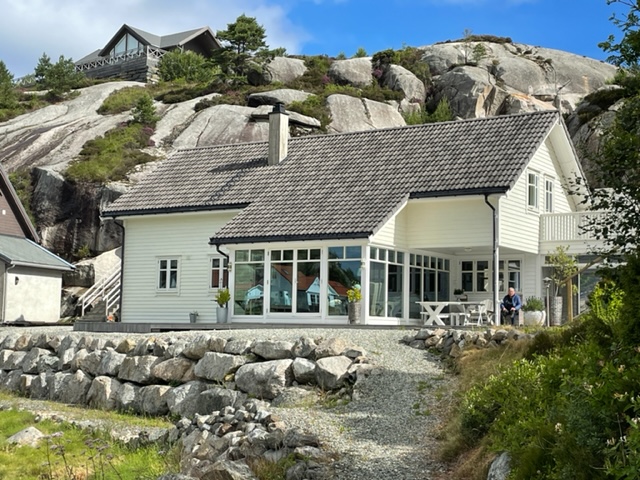
Besides being at the “cottage looking out over the water”, our mealtimes were memorable. Gathering around the dining table each morning, and every night, was fabulous. Not only was the food delicious, but the camaraderie was sweet.
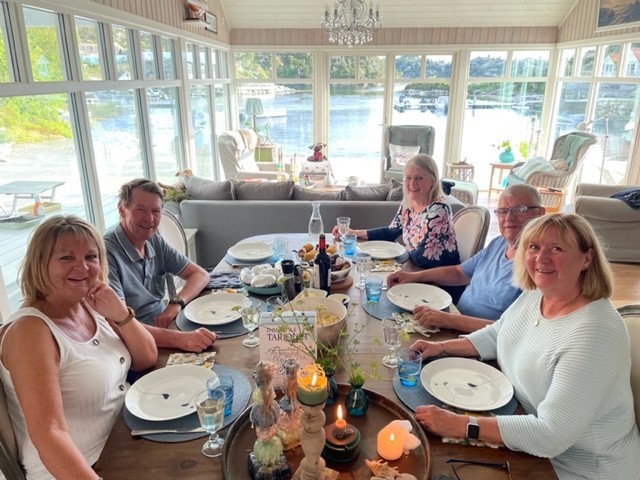
Breakfast buffets in the hotels in Norway are amazing with breads, jams, soft-boiled eggs, egg dishes, meats, cheeses, fish, yogurts, oatmeal, trimmings, waffles, salads, cucumbers (and more)…they’re bountiful!
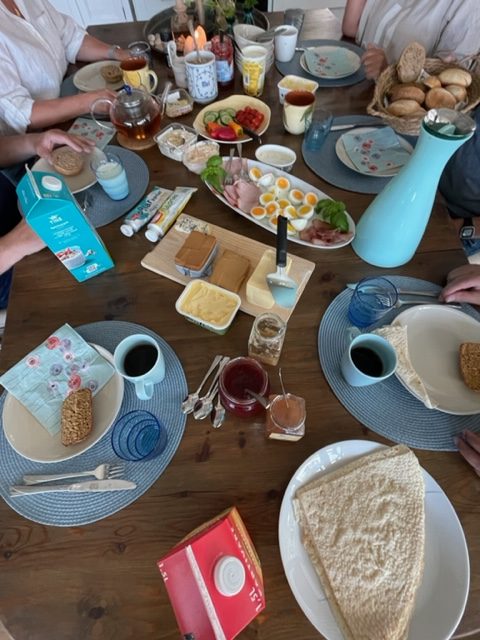
We had a lot of these same foods for breakfast at the cottage, except they were all set on the table in front of us. We passed the array of food back and forth, and enjoyed our leisurely breakfasts.
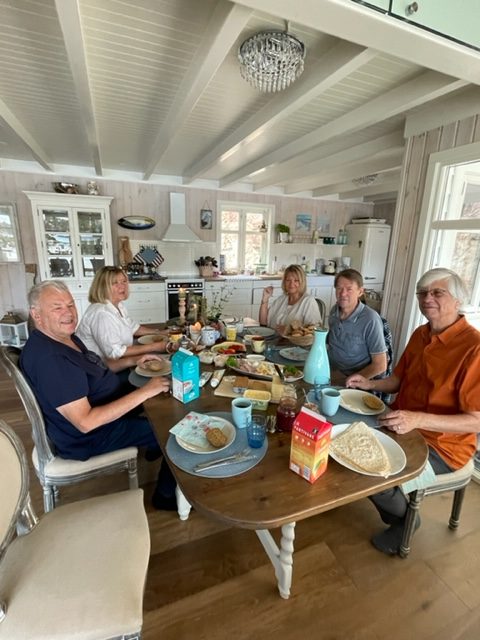
Dinners were fantastic too. Scrumptious food including elk, beef ribs and a pork roll, and chicken. Yum. We would eat a late, leisurely dinner, with good conversation.
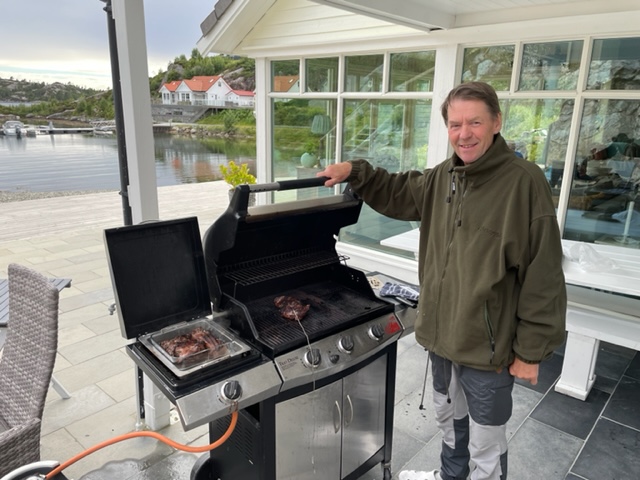
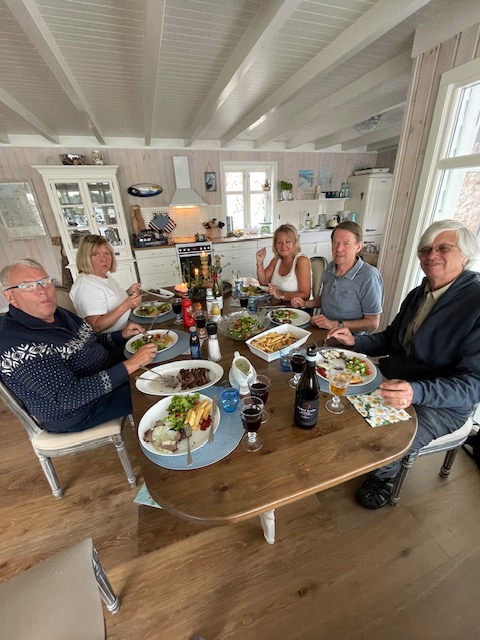
Lunches were eaten outside; on the deck, or on the boat.

Our enchanting mealtimes made for some wonderful memories at the cottage.
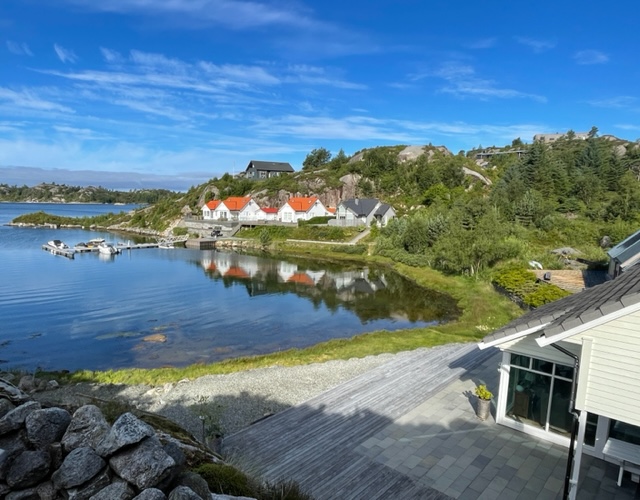
I haven’t mentioned much about my grandmother’s family.
She grew up in Prestnes, an area next to Kaldestad. And therefore, I have relatives in the area on her side of the family too. Jarle Prestnes is another second cousin – on my grandmother’s side. His grandfather and my grandmother were siblings. We had lunch with Jarle and his wife and one daughter, at their home in Bergen. They also traveled to Kaldestad, to Jarle’s father’s home, and Gary and I went there for an enjoyable dinner with his wife, daughter, and Jarle’s sister (and therefore, my second cousin) and her husband. 😉
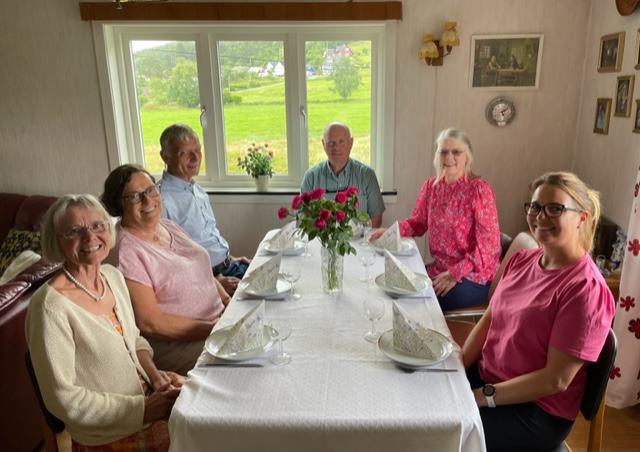
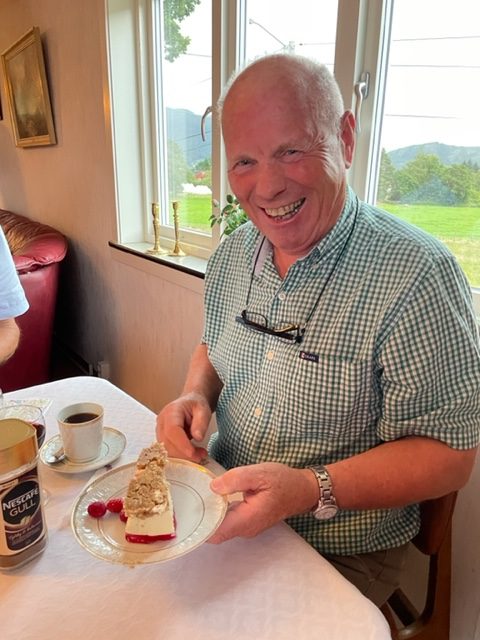
We did not see my grandmother’s home this time however, in 2007 we were able to see Grandma Elizabeth’s house. It is not owned by anyone in the family. In fact, I’m not sure if it is still standing.
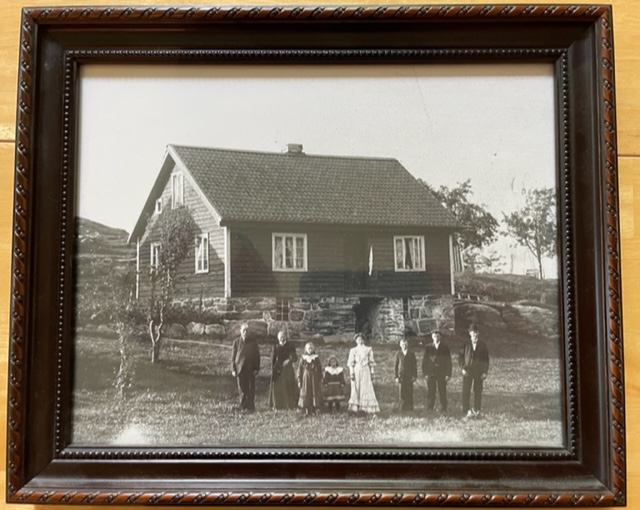

Before leaving Kaldestad, I want to highlight a new boathouse. Some of the grandchildren built a boathouse across the inlet from the old boathouse. It is twin-peaked, modern, and painted white. The boathouse fits right in on the shoreline and is very attractive.
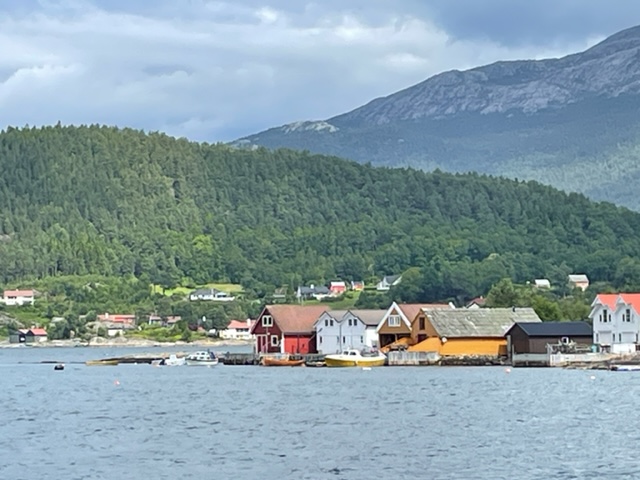

It has space for several boats and currently there is a kayak, a canoe, and a very special treasure…the old wooden row boat that my grandfather’s brother, Johnannes, used for his livelihood, fishing, back in the early 1900’s.
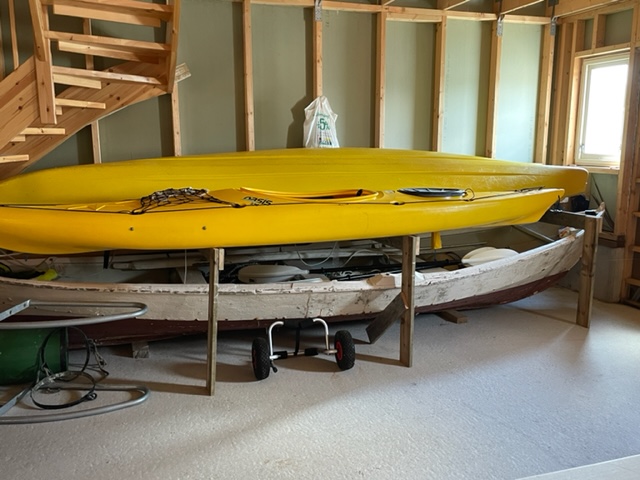
Our times in this very special place, Kaldestad, was enjoyable, exciting, amazing and memorable! I am grateful.
As we left Kaldestad, my heart was full.
While staying at Brita’s house, we were able to connect with more relatives. There was a large gathering at the house, and we were also able to visit many homes in the Kaldestad area for a more personal touch.
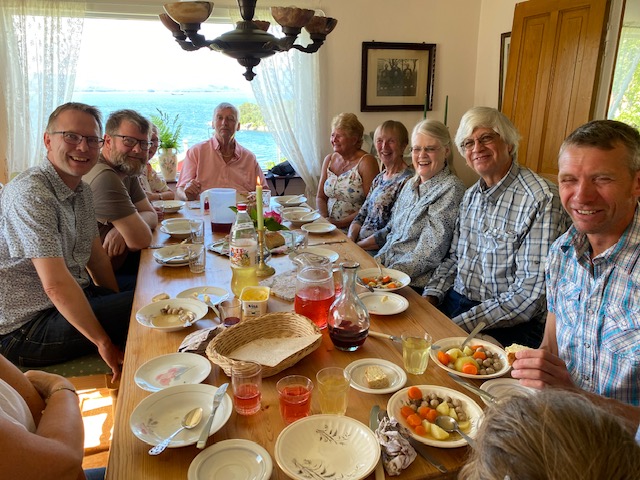
Our first day in Kaldestad additional second cousins, and their families, gathered around the large, dining room table in Brita’s house.

My second cousin, Sigrun, made Sodd, a national dish mainly associated with the Trondheim region. It consists of sheep and beef meatballs, cooked carrots and boiled potatoes. It was delicious. And the conversations were sweet.

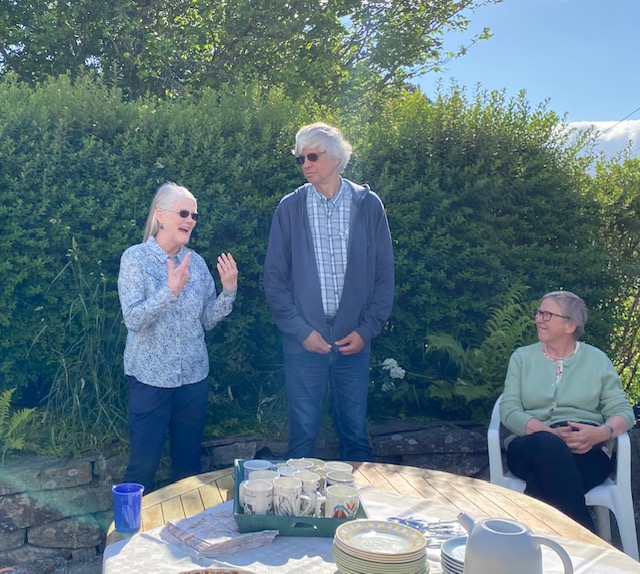
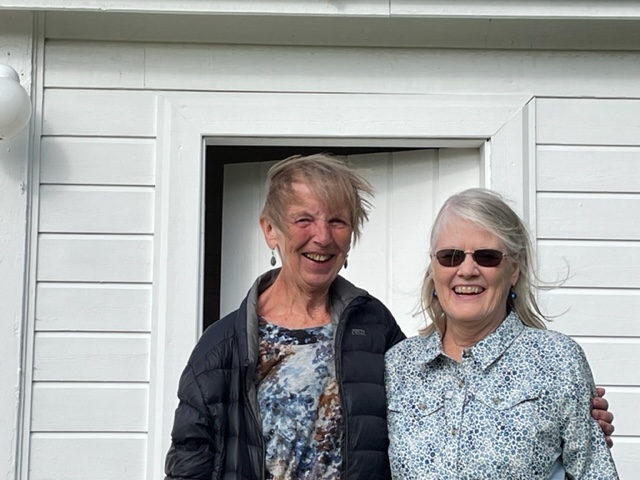
Fortunately, it was a beautiful day and we were able to move outdoors, to a patio near the summer kitchen, for dessert. The dessert table was bountiful. There was a Norwegian cream cake, an almond cake, a fudge cake, ice cream, and… Valerie‘s apple cake.
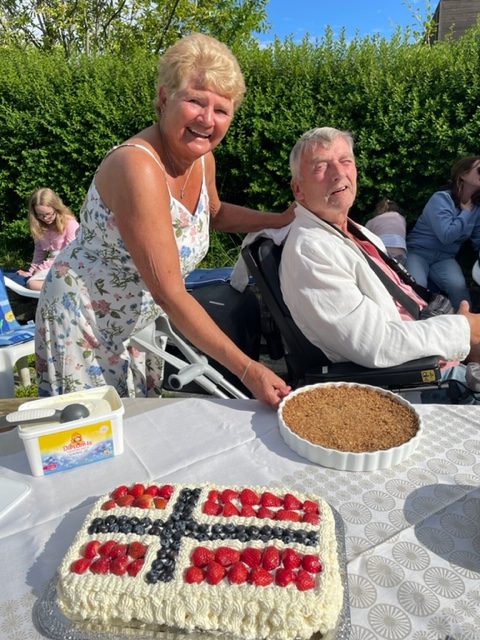
In the 70’s when I was in Norway I made my mom’s apple crisp recipe for the relatives and everyone liked it. The recipe was then modified to the metric system and they’ve been making this recipe in Norway for the last 40+ years and they call it Valerie‘s Apple Cake. How fun is that?
The following day at Kaldestad we visited folks in their homes.

First we went to the home of my second cousin, Sigrun, who’s yard is meticulously manicured and beautiful. Her father, Sigurd, was a bloomster (gardener) and ran the nursery in the Kaldestad and surrounding area. I assume Sigrun acquired her love of gardening and her amazing gardening skills from her father, and by helping with the plants in the gardens and greenhouses while growing up.
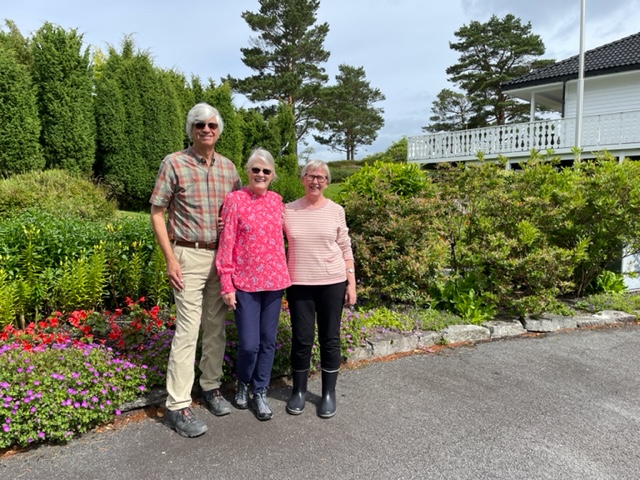
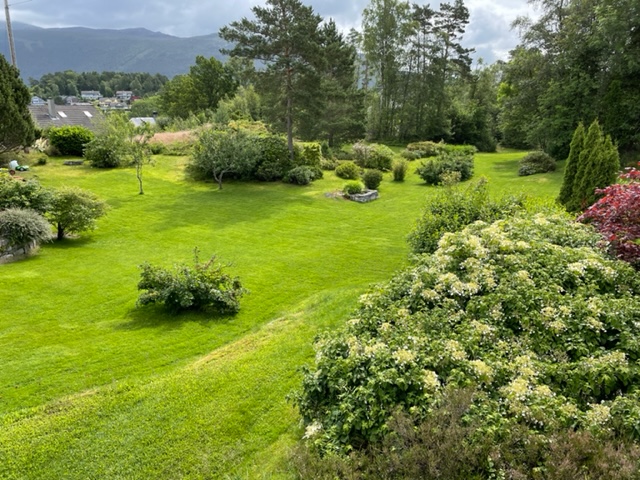
Sigurd (the bloomster) was a first cousin to my father and his house and nursery were just up the hill from Brita’s house.


My second cousin Jostein (Sigrun’s brother) and his wife Gunnvor, have lived in this house (Sigurd’s) for many years. The greenhouses are long gone, but they have pretty flowers growing everywhere too. We enjoyed coffee and desert with them.

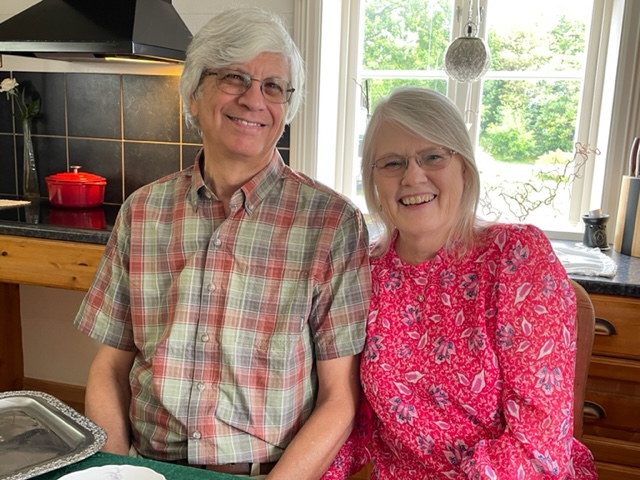

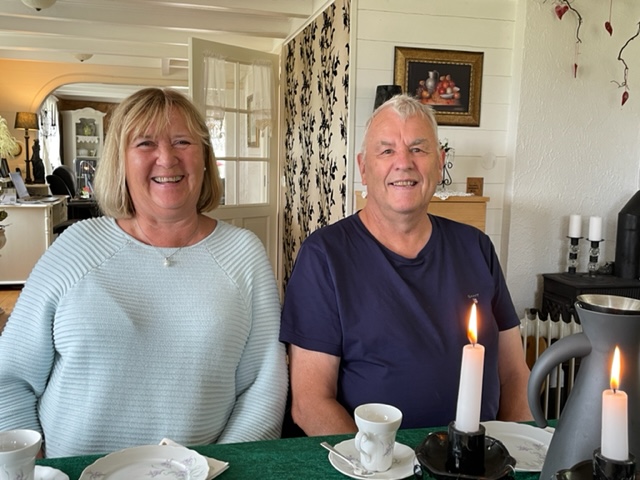
And a little farther up Kaldestad Hill, Jostein and Gunnvor’s son, Steiner, built a home. It was built within the last ten years…what a view.
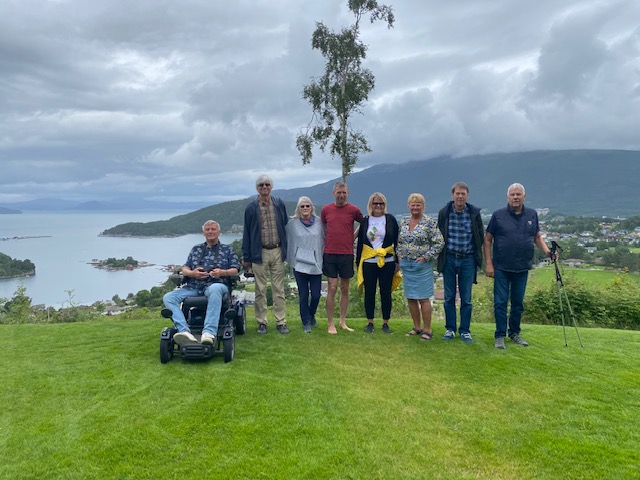
We were able to visit each of these families, all within walking distance of each other, and all within walking distance of Brita’s house.
All had wonderful views. All were beautiful homes. All had magnificent gardens. All were very welcoming.
One of the many highlights in Norway included our trip to Kaldestad, the area where my grandfather came from, and the where my family name originated…Kallestad (spelled Kall rather than Kald).
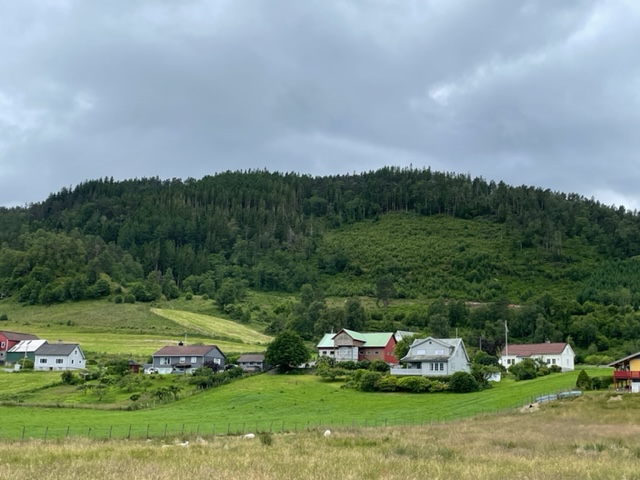
In Kaldestad, we stayed in “Brita’s house” the old farmstead, where my grandfather lived, which is still in the family. It’s a special place.
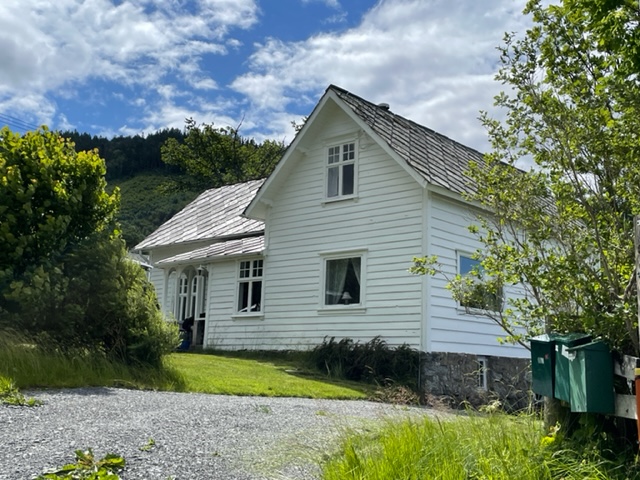
My grandfather, Torkel, lived in this house built by his father, Haktor, in 1881/1882, with his parents and four siblings. Torkel’s older brother, Johannes, inherited the house and had four children, one of whom was his daughter Brita. She never married, and lived in the house all her life. Thus, the house became known as Brita’s house. Brita died in 1982. Johannes’ grandchildren keep up the house to this day.
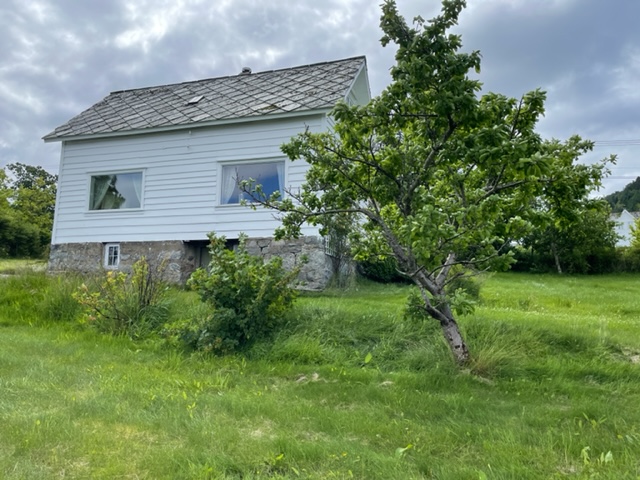
The house is used for special family get aways, which would include our time in Kaldestad. Gary and I stayed in this deep-rooted house with Jomar and Heine and their wives, Bente and Kari. Jomar and Heine are brothers, and my second cousins. Our grandfathers were brothers who grew up in this house.
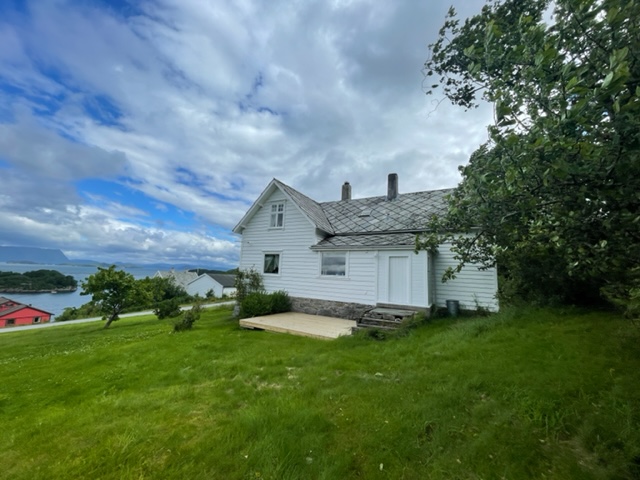
An old-fashioned rose bush, in bloom, greeted us by the front door. As we walked inside it felt so comfortable. We had been there before: I was there in the 70’s and Gary and I were there in 2007.
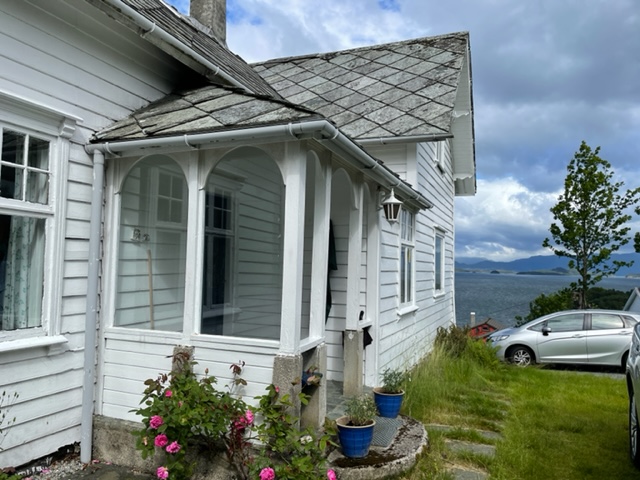
We climbed the painted wooden stairs to the second floor and found our bedrooms with individual dynes on the beds.
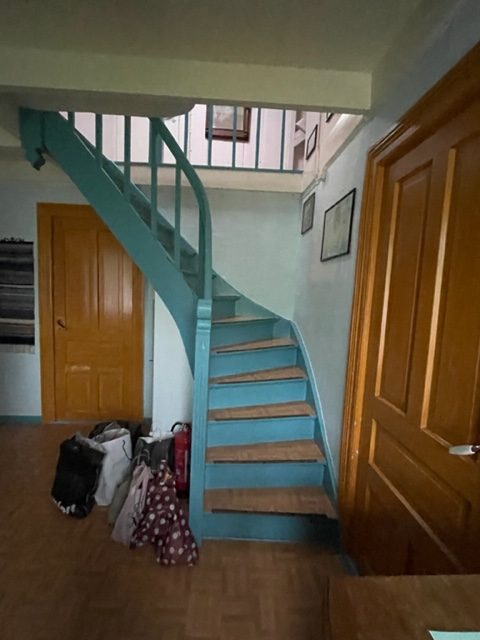
A side story: In 1972 my cousin from America and I experienced our first “dyne” in Norway…a featherbed, or down comforter as they are called today.
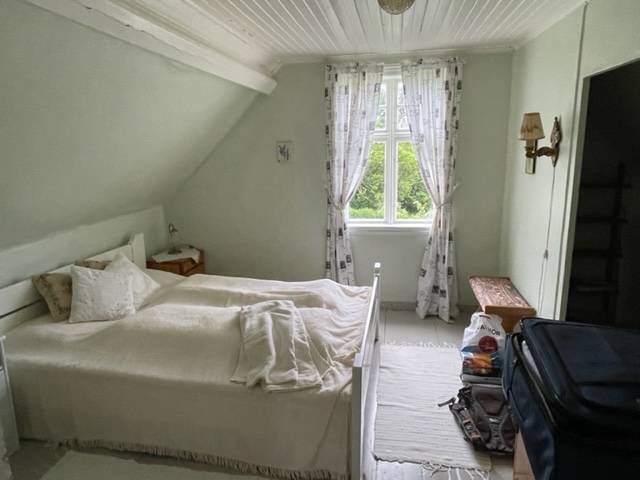
They became popular in America many years later, but not so much in the 70’s. I bought one at the store in Kaldestad (managed by Brita) and had it sent to America. It was only a few years ago that I had to finally give it up because many feathers kept poking out.
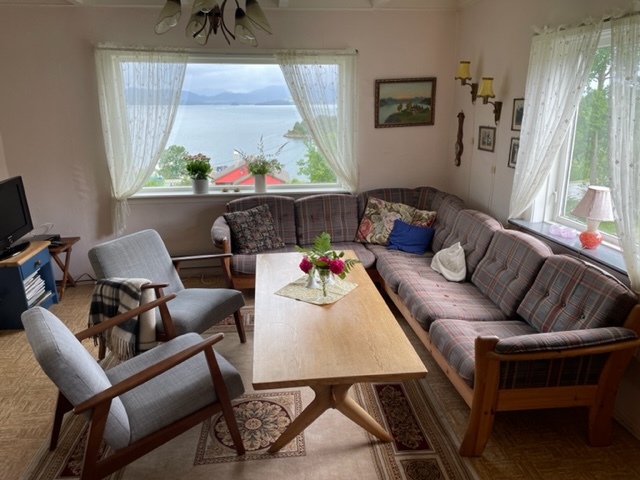
Back to the house: It was a chilly evening when we pulled into the driveway at Brita’s house. Heine had arrived before us and started a fire in the wood-burning stove, so it was nice and cozy in the living room, with a view. Old family pictures of distant (and not so distant) relatives adorned the walls and it was so thrilling and delightful to be in this house where my grandfather had once lived.
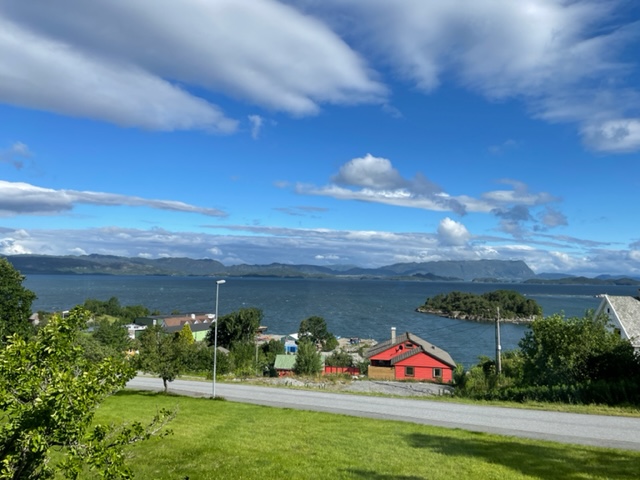
The view from the living room, and the dining room, was of the sea and sky, and we enjoyed looking out the large picture windows.
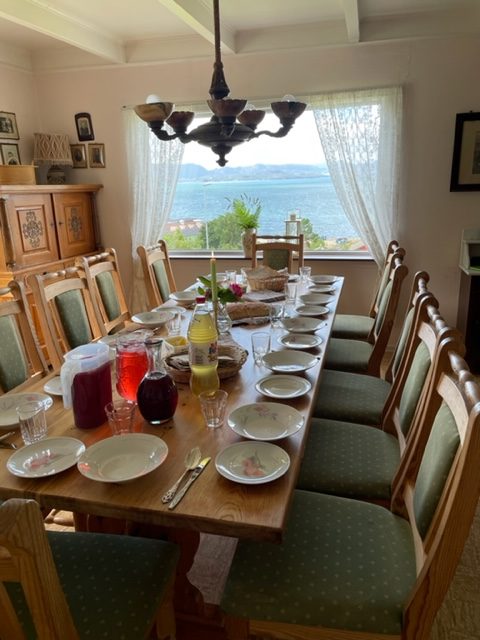
We walked down the hill to the sea where there were two old, small, wooden buildings; an old store, and an old boathouse on the shore. They were a part of the original property. The store opened in 1903 and was prosperous when sea routes were common and roads were non existent in the area. The store moved to the roadside in 1947 when a road was built through Kaldestad. (This is the store where I bought my dyne).
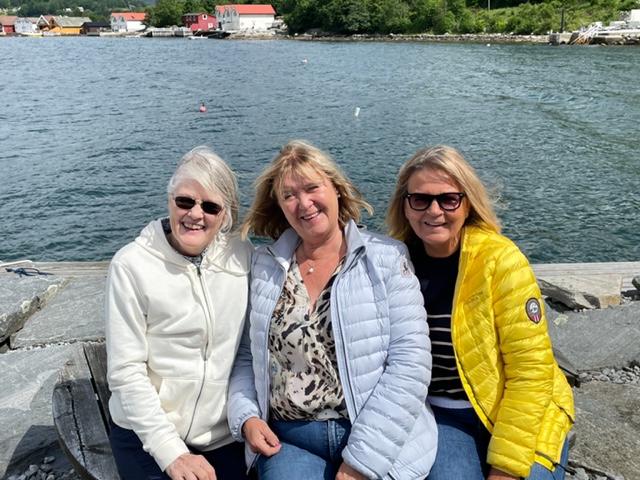
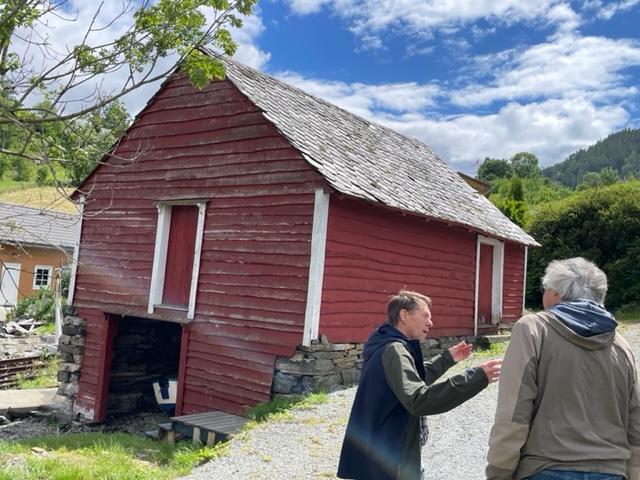
The store on the sea, called La-Berget (pronounced la-bar-ia) was always painted red.
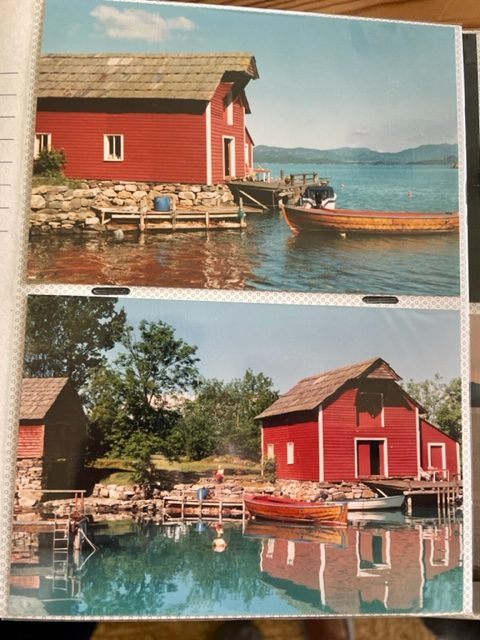
But two great-grandchildren bought it from the family and did some renovations. Now it’s gray.

When old enough, Brita ran the store, both by the sea, and then on the roadside.
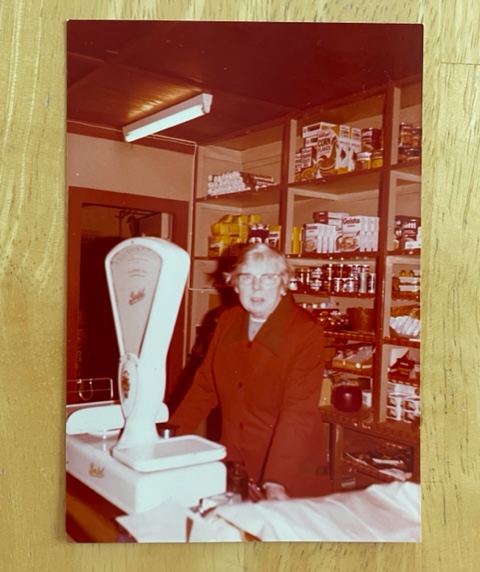
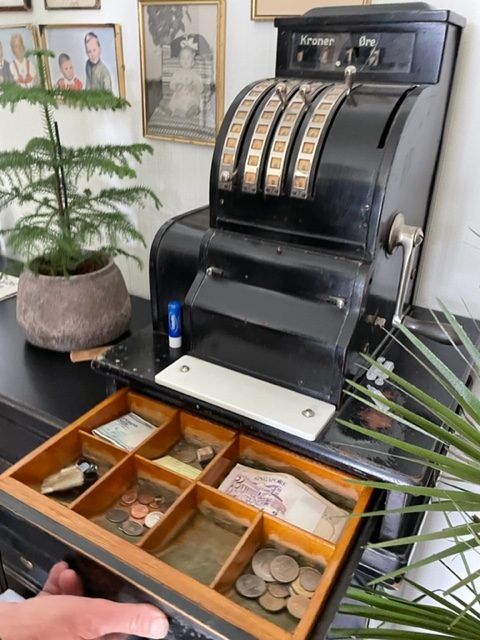
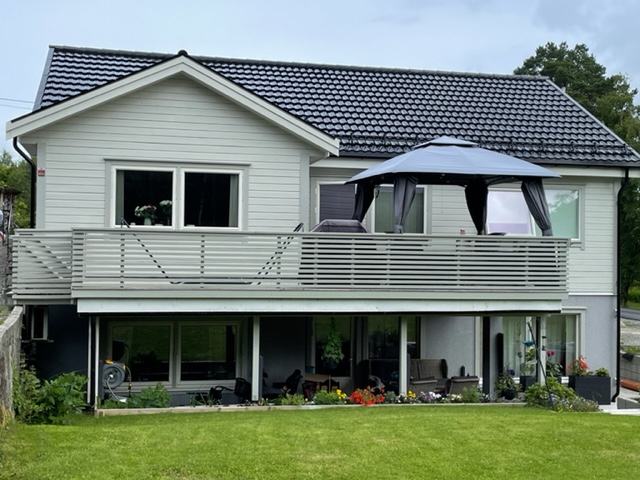
There have been many gatherings and guests in Brita’s house over the years. It is an extraordinary place.
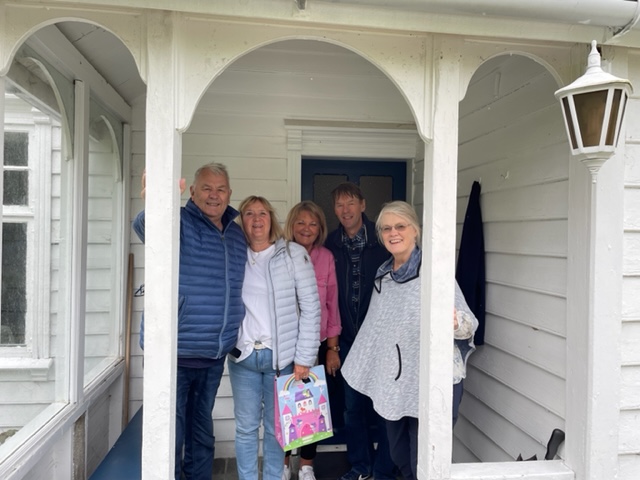
To be able to stay in this house and learn more of the history of my family was a precious gift that I cherish.
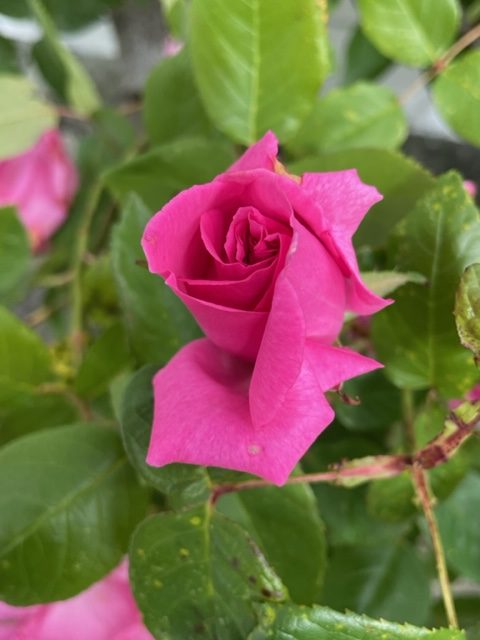
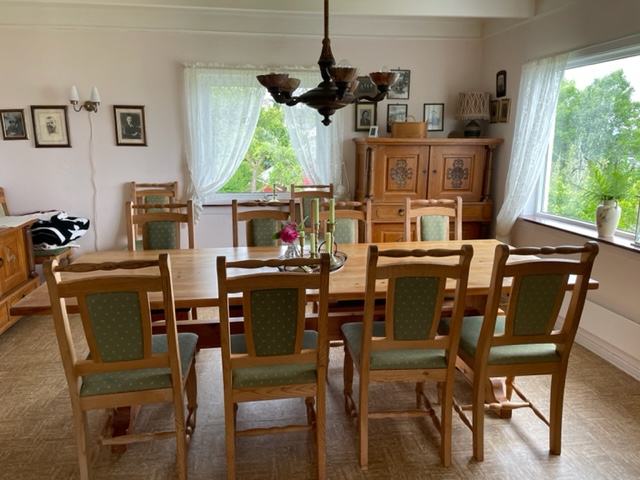
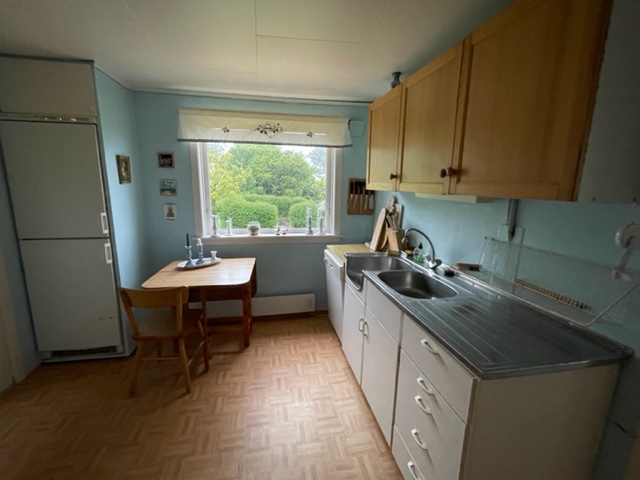
In 1902 my grandfather, Torkel Kallestad (b.1885), was 17 years old when he sailed for America aboard the ship Umbria. He was sponsored by a Norwegian farmer in Iowa, and he later moved to Minneapolis. Torkel became a carpenter by trade. He had three brothers: William, who also moved to America, Haktor, who died at age 12, and Johannes, who stayed behind in Norway. Johannes was the oldest, and was to inherit the family farm. They had one sister, Kristiana, who never married.
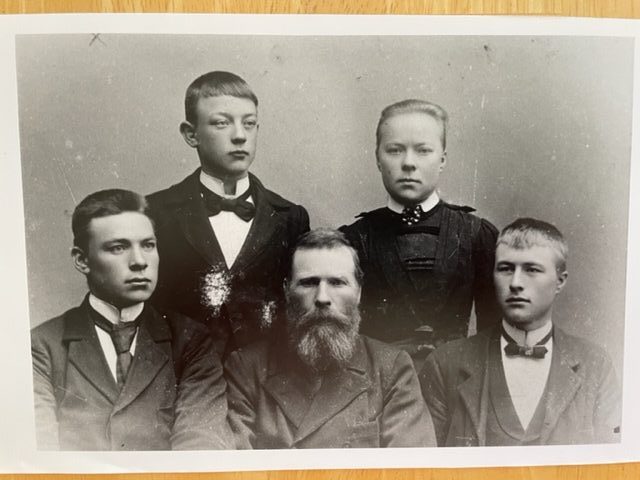
Torkel was an immigrant that left his beautiful home in Norway for better work opportunities. He was was fortunate to be able to return to his home country to visit. His first trip back to Norway was in 1910 when he met his future wife, my grandmother Elizabeth. She followed him to America in 1912, and they married in 1913.
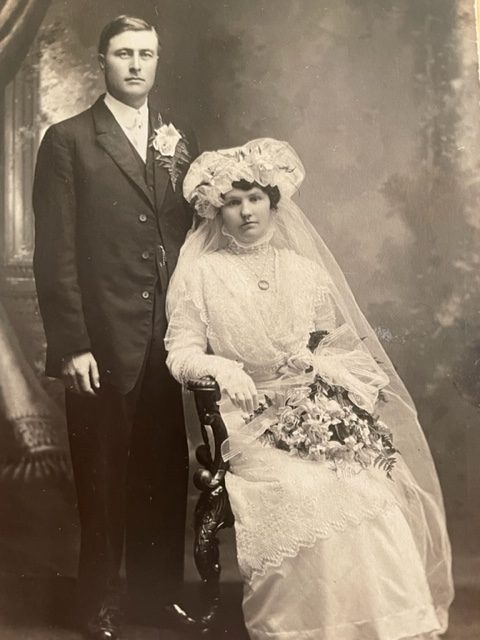
Elizabeth traveled back to Norway in 1925 with three of their four children (fourth one not born yet), and Torkel followed later for a short stay. Elizabeth went back to Norway in 1948 with her daughter Agnes, and again, for the last time, she and Torkel returned to Norway for a visit in 1958. She died in 1962. Torkel died in 1970.
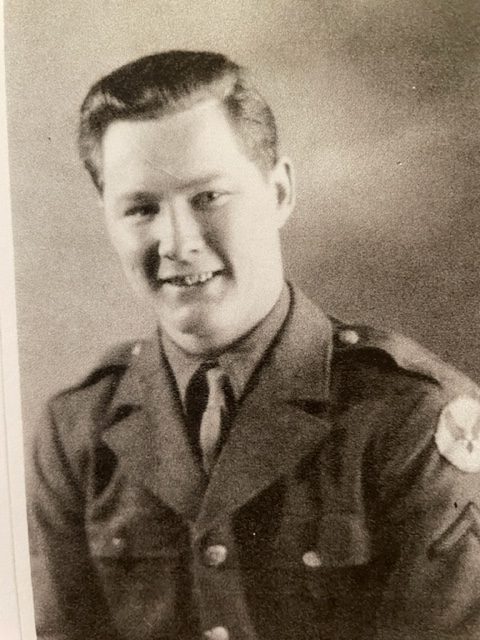
One of their children was Herbert (b.1918), my father. During a health recuperation in the 60’s my father became interested in the family history and started doing research. In 1969 he and my mother took a trip to Norway to find out more information, and thus began a wonderful re-connection between our relatives in Norway and those of us here in Minnesota.
My father died in 1974, at the young age 55…little did he know what he started. We are all truly grateful for his initiation.
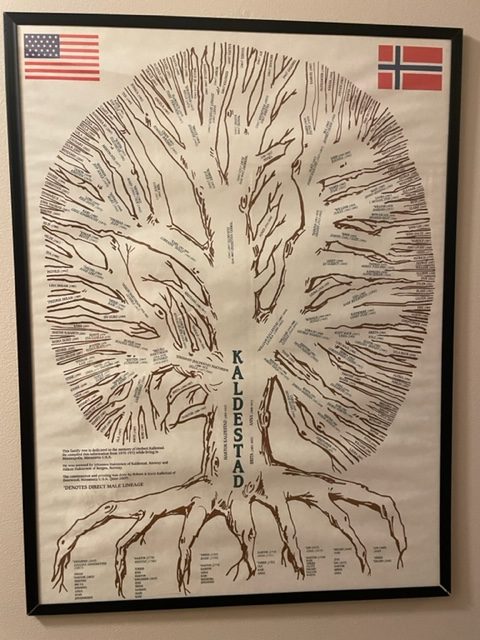
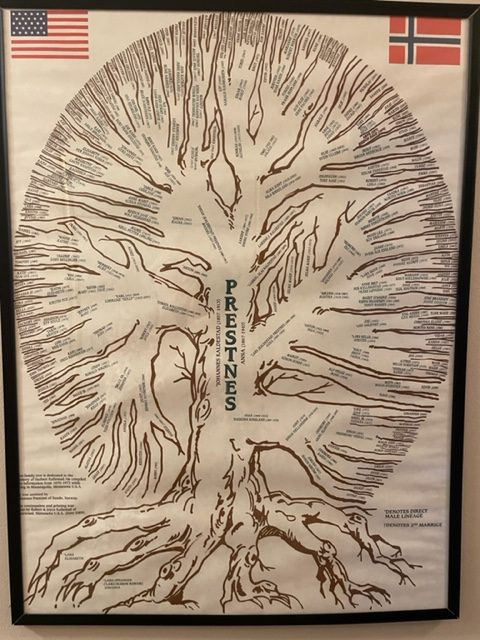
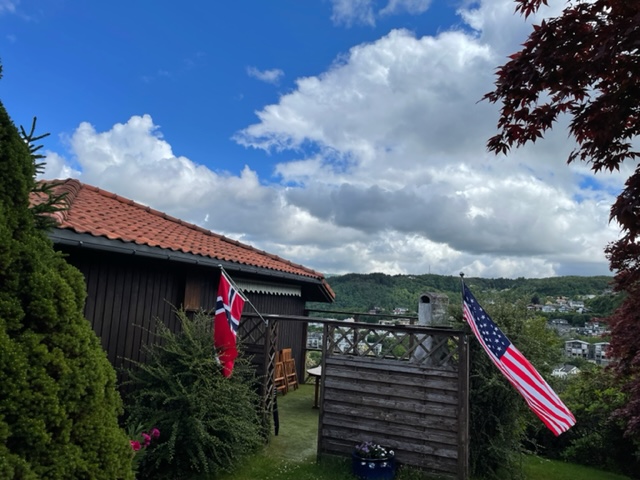
My second cousin in Norway, Sigrun, has done, and continues to do, extensive research on the family genealogy. My Uncle Bob also helped Sigrun with research. He died in December 2021.
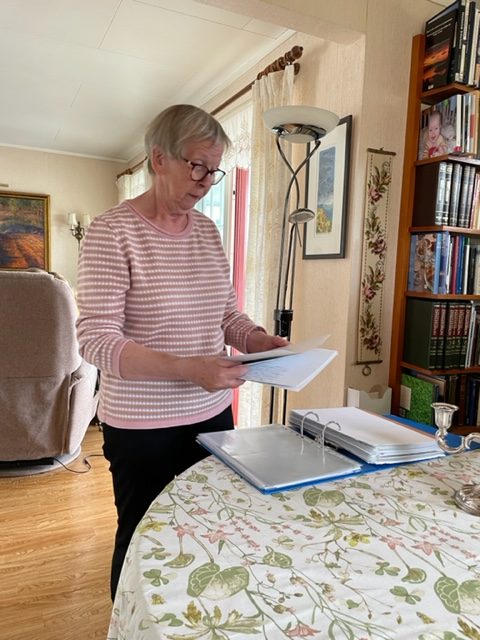
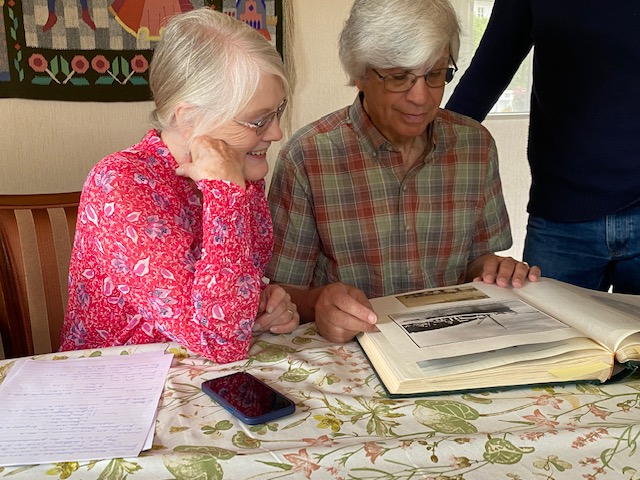
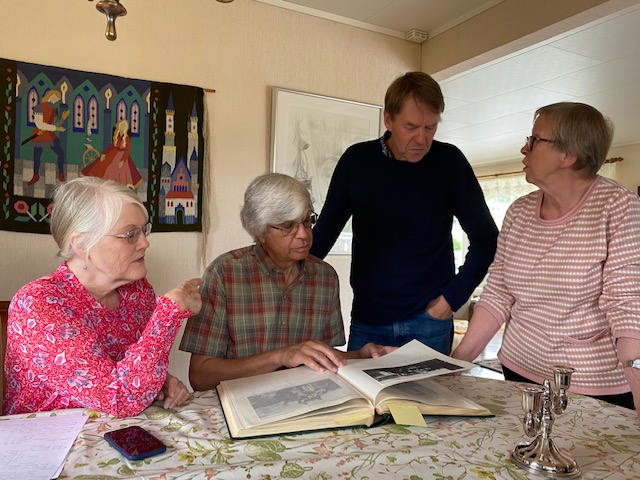
It’s difficult to explain how special our time was with our Norwegian relatives. It was very precious, fun and exciting!